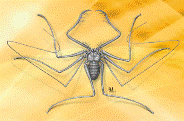Papers in the Biological Sciences

Eileen Hebets Publications
Document Type
Article
Date of this Version
2010
Abstract
While an individual’s genetic framework is a major contributor in determining its eventual mate choice, the role of the environment in further influencing mating decisions has long been recognized. Animals gather information from the environment throughout life, and in some cases, may apply this information to increase their odds of obtaining a high-quality mate. In short, these individuals learn. Moreover, such learning can have a social component. “Social learning” is a general term that describes any learning based on observing, interacting with, and/or imitating others in a social context. Social learning can transmit information vertically, generation to generation (e.g., parent to offspring) and/or horizontally, within a generation (as individual to individual). This form of information transfer is generally referred to as “cultural transmission.” This entry will focus on social learning that relates to mate choice – mate-choice learning.


Comments
Published in Encyclopedia of Animal Behavior, edited by Michael D. Breed and Janice Moore. Amsterdam: Elsevier B.V., 2010, vol. 2, pp. 389-393. Copyright © 2010 Elsevier Ltd. Used by permission.